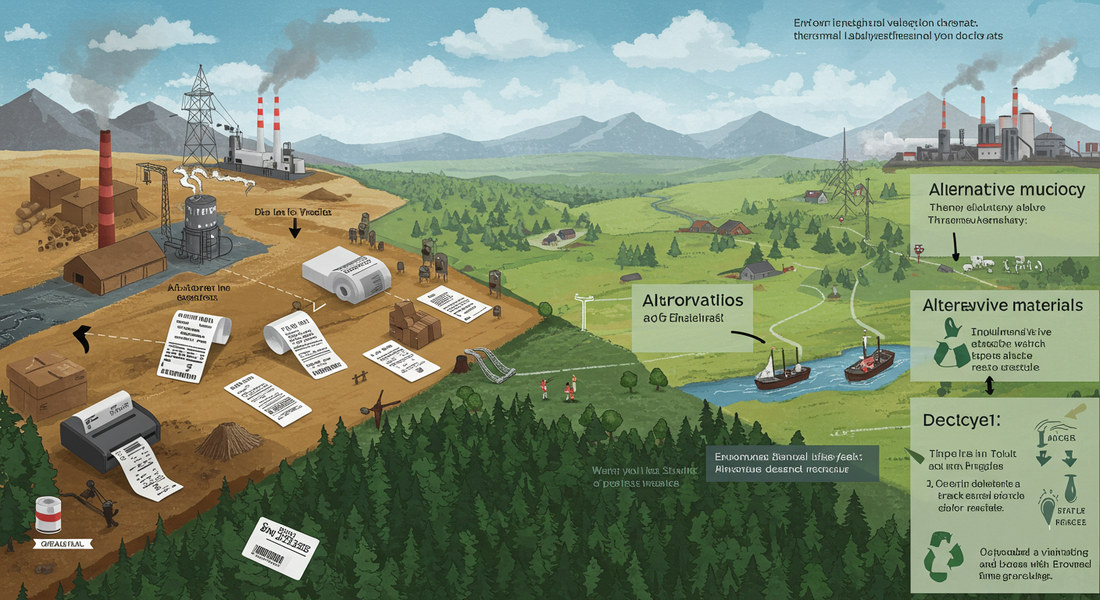Studies on the environmental impacts of labels raise questions about their long-term effect. Which sustainability factors exist in these labels, and do they in fact contribute to the destruction of the environment?

What Are Thermal Labels Made Of?
Thermal labels don’t use ink or toner, which sounds great—less waste, right? But they rely on special coatings that react to heat. Here’s what’s inside:
-
Direct Thermal Labels: These have a heat-sensitive coating that darkens when exposed to heat. No ink, no mess.
-
Thermal Transfer Labels: These use a ribbon that transfers ink to the label when heated. It creates durable prints but produces ribbon waste.
Both are useful, but their impact on the environment depends on the materials used.
Are thermal labels recyclable?
The short answer: sometimes. The longer answer? It depends on the material and coating.
Direct Thermal Labels
These are tricky. Many have BPA (Bisphenol A) or BPS (Bisphenol S) in their coatings—chemicals that aren’t exactly eco-friendly. Some places won’t recycle them due to these coatings. However, there are BPA-free options, which are safer and more sustainable.
Thermal Transfer Labels
These are often more recyclable, depending on the type of paper or film used. But the downside? The ribbons used for printing create extra waste, which isn't easy to recycle.
How Thermal Labels Affect the Environment
1. Chemical Coatings and BPA
Many thermal labels contain BPA or BPS, which can be harmful to both people and the environment. Over time, these chemicals can seep into soil and water. Choosing BPA-free labels is a step toward reducing this impact.
2. Ribbon Waste
Thermal transfer printing produces ribbon waste, which is often made of plastic and coated with ink. These ribbons usually end up in landfills since they’re hard to recycle.
3. Deforestation & Paper Waste
Like all paper-based products, thermal labels contribute to tree cutting and energy consumption. Choosing FSC-certified labels (labels made from sustainably sourced paper) helps reduce this impact.
How to Make Thermal Labeling More Eco-Friendly
1. Choose BPA-Free Labels
Look for labels that are BPA- and BPS-free to minimize harmful chemical exposure. These labels are safer for both humans and the environment.
2. Use Recyclable and FSC-Certified Labels
Some thermal labels are made with recyclable paper or sustainably sourced materials. Check for certifications like FSC (Forest Stewardship Council) to ensure they’re eco-friendly.
3. Reduce Ribbon Waste
If you use thermal transfer labels, look for ribbons with less plastic content or brands that offer recycling programs for used ribbons.
4. Buy Only What You Need
Over-ordering labels leads to waste. Stick to what you need to avoid unnecessary disposal.
5. Explore Linerless Labels
Linerless thermal labels remove the backing paper, reducing waste and making them an excellent eco-friendly alternative.
Final Thoughts
Thermal labels aren’t inherently bad, but their environmental impact depends on the materials used.
If you’re looking for eco-friendly thermal labels, check out our selection at 4x6labels. We offer high-quality labels designed with sustainability in mind!

